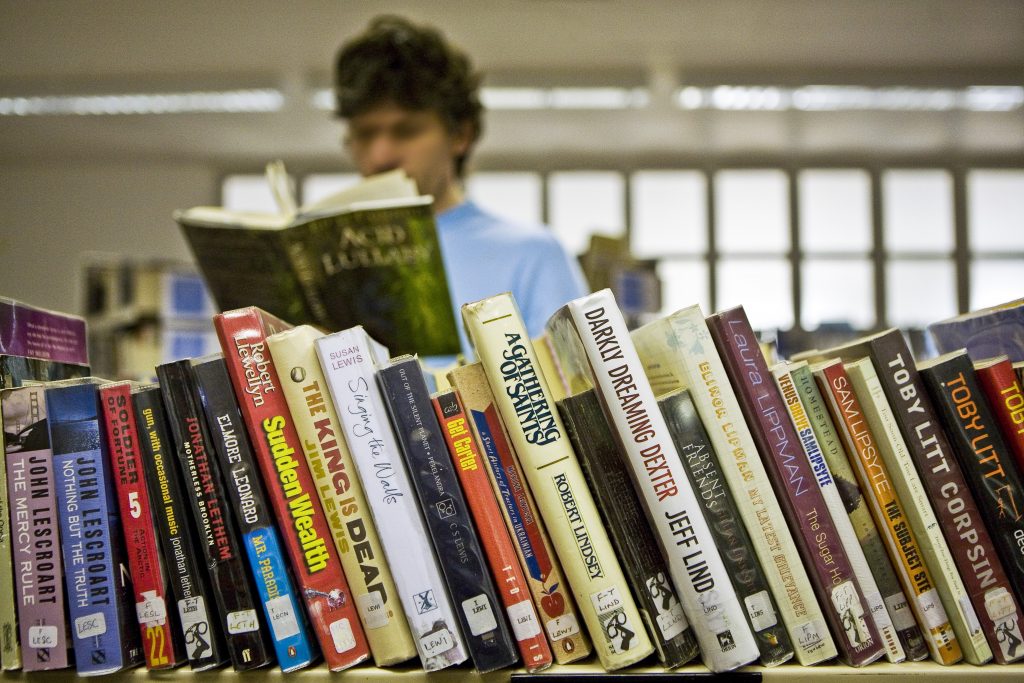The pandemic has exacerbated the challenges facing already over-stretched prison services around the world, but the crisis is also an opportunity to do things differently, particularly in prison education, write Marie Macauley and Lisa Krolak on International Day of Education in Prison

With more than 11 million people in prison worldwide and prison populations increasing rapidly, many prisons around the world were already at crisis point, unable to provide basic services such as education, when the pandemic struck. The crisis has highlighted the challenges prisons face, but it is also providing impetus for change.
Education in prison can provide prisoners with the opportunity to learn new skills and give them a renewed sense of purpose. Research has shown that prisoners who participate in education and training programmes are less likely to return to prison. They are also more likely to find employment on release.
Most countries provide formal primary and secondary education and vocational training to prisoners free of charge. Some countries provide access to higher education, whether through distance-learning or in the prison, at the prisoners’ own expense or financed by private grants. Prison libraries also play a key role in enabling access to information and reading materials to inmates.
International organizations, non-governmental organizations (NGOs) and other institutions provide educational activities in prisons, ranging from law classes to creative-writing workshops and learning focused on building links between prisoners and their families. These programmes are key in creating opportunities for prisoners and encouraging them into learning. With the advent of COVID-19, many such programmes are paused due to restrictions on educational staff and community volunteers entering prisons and providing materials and resources for learning.
Priorities around the world and inside prisons have changed since the pandemic started: ensuring the health and safety of inmates and prison staff has taken the focus away from learning. While educational institutions in the outside world adopted online modalities, this was not possible in most prisons due to strict security regulations. Inmates in general do not have access to digital tools and the internet.
The majority of education activities in prisons have been suspended due to the pandemic. However, in some contexts, technology- or paper-based instruction has been introduced in an attempt to provide inmates with continuity of education. One of the main takeaways from the UNESCO Global Network of Learning Cities’ webinar that on prison education in May was that the crisis has incentivized other reforms, some of which have been advocated by education activists for decades, such as providing prisoners with safe access to online educational resources and other digital tools.
For example, when face-to-face school lessons in Norway were suspended because of COVID-19, nearly all traditional education for prisoners was also put on hold. But alternative learning modalities were implemented. Traditional methods such as paper-based learning (letters sent between teachers and students) were employed, but the use of telephones, memory sticks, voice recorders and iPads for remote learning was also permitted. Other countries faced with the same challenges reported using radio, podcasts, and peer learning.
Higher education programmes in prisons around the world had to adjust their method of instruction when the pandemic escalated in March. To ensure that programmes continued, institutions have resorted to a number of strategies, for example, distributing books to prisoners before prison libraries were locked down to ensure reading materials were available. Some programmes have had to find other ways to communicate with students, leveraging limited internet access or limited numbers of laptops and tablets, using closed email systems or setting up systems for students to call to reach an instructor. While these creative solutions have been successful, they have also highlighted the need for in-person learning. Therefore, finding safe blended teaching and learning modalities will be a way forward, such as ‘Skyping’ with teachers or taking part in learning circles or webinar formats.
More broadly, the shutdown has underlined the gap between digital possibilities inside and outside prison walls. International institutions, NGOs and voluntary organizations have been active in trying to close the gap. For example, the Prisoner Learning Alliance has developed the InCellActivityHub, a library of resources available for prison education departments to download. UK-based Learning Together Network (Cambridge University) and Rowan Mackenzie, founder of Shakespeare UnBard (collaborative in-prison theatre companies), have jointly created a series of Shakespeare distance learning packs and uploaded these to the InCellActivityHub.
The COVID-19 crisis has highlighted both the gaps in access to learning provisions for prisoners and the unsustainability of current learning programmes within prisons, as the world adapts to digital learning solutions. The activities and projects put in place by prison education actors within governments, civil society and the international community demonstrate that education continuity in the prison context can be achieved and that, moving forward, online methods for learning and access to education should be pursued more systematically.
UIL’s initiative on prison education aims to improve current policies and practices in the area of prison education and to stimulate and promote professional exchange between policy-makers, researchers and practitioners. We will continue to work with Member States to ensure that the discontinuation of face-to-face education in prisons does not severely impact the overall continuity of learning and that prisoners continue to be given access to learning opportunities. We will also continue to advocate the importance of well-equipped prison libraries and access to relevant information, literacy opportunities and reading materials in the prison environment by chairing the IFLA Working Group on Prison Libraries.
Marie Macauley is Programme Specialist and Lisa Krolak Chief Librarian at UIL. This post draws on information collected for an upcoming literature review on education in prison, a webinar on prison education, a policy brief on How prison libraries support rehabilitation efforts and Books beyond Bars: The transformative potential of prison libraries, written by Ms Krolak and published by UIL in 2019.

Rather than spending more to house the growing prison population and to fund excessive rates of incarceration, federal and state governments should focus instead on supporting rehabilitation and reducing recidivism.